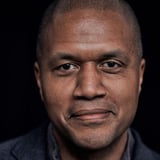Log in or create a free Rosenverse account to watch this video.
Log in Create free account100s of community videos are available to free members. Conference talks are generally available to Gold members.
This video is featured in the AI and UX playlist.
Summary
In an environment of UX staff reductions, a focus on tangible design skills and tool expertise, quarterly profits, and angst over what AI means for the future of everyone’s jobs, what place does “theory” have? As designers and researchers we engage in theory every day by hypothesizing: “If we design it like this, then we will have outcome X.” The bigger the problem you’re trying to solve, the more important it becomes to have a theoretical framework about why you’re doing what you’re doing. The breathless parade of AI releases present the biggest challenges (and potential opportunities) in many years. As designers we should have a posture on how to shape how AI is used and its impacts. Much as the mid-century modernists developed coherent frameworks for understanding the relationship between form, function, and human needs, using novel technologies coming out of World War II, we must now articulate theories that help us make sense of this new landscape where intelligence itself has become a design material. Join UX researcher/strategist Adam Richardson and UX design leader Uday Gajendar for an exploration of how we might develop the theoretical foundations designers need to thoughtfully shape AI interactions.
Key Insights
-
•
Design has always been a form of theory, predicting outcomes and unintended consequences of design decisions.
-
•
Historical design movements, like Arts and Crafts and Bauhaus, were driven by social, cultural, and humanistic ideals, not just aesthetics.
-
•
Victor Papanek framed design as a conscious effort to impose meaningful order against mass consumerism and ecological damage.
-
•
Dick Buchanan viewed design as a liberal art of technology and a form of rhetoric shaping how people live.
-
•
Many foundational UX theories, such as affordances, are being neglected in favor of short-term growth and efficiency.
-
•
The current design profession lacks a shared, hopeful ideal or movement that is sustainable and collective.
-
•
Craft involves intentionality and care, extending beyond physical making to digital micro-interactions that convey human presence.
-
•
AI introduces knowledge as a new material in design, complicating notions of authorship and human touch.
-
•
Systems thinking and participatory design remain crucial for understanding trade-offs and unintended consequences in AI-driven projects.
-
•
Individual designers often struggle to enact humanistic values within large organizations driven by investor and capitalist pressures.
Notable Quotes
"As designers, in many ways, we are theorists, even if we don’t think of ourselves that way."
"The Arts and Crafts movement tried to recapture the artisan’s humanity lost after the industrial revolution."
"Mass production is here to stay; modernism asked what we can do to make it more humanistic."
"Design is a rhetorical statement, an argument for living your life a certain way."
"You can’t develop a career just mastering a tool; those become obsolete as technology evolves."
"We don’t need more tactical skill training; we need a movement with shared ideals and collective purpose."
"Good designers can shift scale fluidly between the big picture and craft-level details."
"AI means knowledge is now the material we’re working with in design, not just pixels or code."
"AI-generated imagery feels too perfect and shiny, lacking the flawed human presence we appreciate."
"Trying to figure this stuff out inside your day job is nearly impossible; we need spaces for slower thinking."
Or choose a question:















More Videos

"More awareness and PR about what we do will create pull and make it easier to engage people in insight generation."
Steve Portigal Chris Chapo Kelly Goto Christian RohrerDiscussion
May 13, 2015

"The business isn’t necessarily interested in doing design better. They just want the outcomes that design can make possible."
Jess GrecoCreating a Basis for Change: Scaling Design Maturity
June 8, 2022

"Failure cake helped us eat our feelings and provided comfort during hard moments."
Dan WardFailure Friday #1 with Dan Ward
February 7, 2025

"Unless you write down the idea, it doesn’t actually count."
Husani OakleyBias Towards Action: Building Teams that Build Work
June 14, 2018

"Choosing a tool designed for your specific problem matters way more than just picking the smartest AI available."
Karen McGrane Jeff EatonAI for Information Architects: Are the robots coming for our jobs?
November 21, 2024

"The head of design can’t manage a design organization of 20-plus people alone—it’s a very different role."
Kristin SkinnerOpening Keynote: Org Design for Design Orgs
November 6, 2017

"Look at your partnership with product and engineering as a design task—understand their pressures and needs."
Alfred KahnA Seat at the Table: Making Your Team a Strategic Partner
November 29, 2023

"Start small and test the waters, then be decisive and lean into your hunches and decisions."
Liza Pemstein Jane DavisScaling Research Via an Ops First Model at Clever
March 27, 2023

"As you grow as a leader, you spend less time doing research and more time being called upon as a researcher."
Nalini P. KotamrajuTwo Jobs in One: Being a “Leader who is a Researcher” and a “Researcher who is a Leader"
March 10, 2021

















